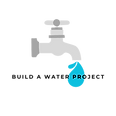Bioaugmentation
- Asiya Siddiqui
- Nov 11, 2024
- 2 min read
Updated: Nov 25, 2024
By: Annie Finholm
March 28, 2024
Bioaugmentation is a very popular version of cleaning contaminated water. Research suggests that there are many different ways to test the benefits of bioaugmentation, such as through the creation of synthetic materials and placing them into water. This then creates an environment where the process can be effectively tested. This method of waste removal is used in wastewater treatment centers to treat medium amounts of water at a time.

This process can be described as simple in the context that a person knows the scientific reasoning behind each step. Nzila et. al can begin describing the process through defining it, saying that bioaugmentation is “the addition of microorganisms that can biodegrade recalcitrant molecules in the polluted environment.” Recalcitrant molecules are biodegradation-resistant. Thus, these microorganisms must be incorporated because, without them, the polluted region would be resistant to other types of treatment. Handore writes that through the addition of already-grown microbial cultures, they can “supplement the indigenous microbial populations in soils that degrade harmful petrochemicals.”
There are a plethora of advantages to this process. For example, it is highly cost-effective. This is especially important for the countries facing the water crisis that are severely underfunded in these realms. Garratt Callahan writes that these low costs are due to “lower requirements in energy, chemicals, and training.” In comparison to other types of water treatment, the activated sludge contains fewer chemicals. In addition, it is sustainable and there is a great deal of regulatory compliance. There is a smaller carbon footprint thanks to bioaugmentation because of the aforementioned lower energy requirements. This method of water treatment is, according to the article, a “proven, safe, and less invasive treatment” that is “favorably viewed by regulators across the United States and beyond.” So, this process must be considered globally.
Therefore, bioaugmentation, which is the process of utilizing activated sludge to remove waste materials from water, is a highly effective method of pollutant control. While there is one large downside to the method, there are more benefits to bioaugmentation, making it a worthwhile one. Bioaugmentation works in all regions of the world, but only in small to medium-sized areas. So, it should be highly considered when companies and officials question what method to use when cleaning drinking water.
Support our cause!
References:
"Bioaugmentation - Natural Selection, Optimized | Garratt-Callahan." Garratt-Callahan Water Treatment Expertise Since 1904, 30 Dec. 2022, garrattcallahan.com/problems-solved/bioaugmentation/.
Handore, Anita V., and Dilip V. Handore. "Bioaugmentation." ScienceDirect, 2023, www.sciencedirect.com/topics/immunology-and-microbiology/bioaugmentation#:~:text=Bioaugmentation%20is%20the%20manual%20addition,cost%20(Speight%2C%202017).
Nzila, Alexis, et al. "Bioaugmentation: An Emerging Strategy of Industrial Wastewater Treatment for Reuse and Discharge." PubMed Central (PMC), 25 Aug. 2016, www.ncbi.nlm.nih.gov/pmc/articles/PMC5036679/#:~:text=Bioaugmentation%20is%20the%20addition%20of,to%20the%20physico%2Dchemical%20approaches.
"Practical Limitations of Bioaugmentation in Treating Heavy Metal Contaminated Soil and Role of Plant Growth Promoting Bacteria in Phytoremediation As a Promising Alternative Approach." PubMed Central (PMC), 1 Apr. 2022, www.ncbi.nlm.nih.gov/pmc/articles/PMC8983376/.
.png)



Comments